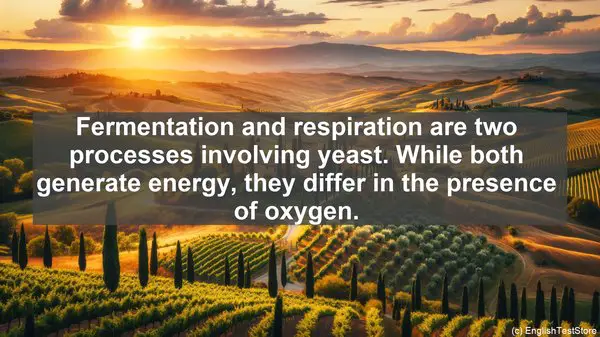Introduction
Today, we’re going to dive into the fascinating world of yeast fermentation. But before we begin, it’s crucial to clarify some commonly confused words that often crop up in this field. So, let’s get started!
1. Fermentation vs. Respiration
Fermentation and respiration are two processes involving yeast. While both generate energy, they differ in the presence of oxygen. Fermentation occurs without oxygen, while respiration requires it. Understanding this distinction is vital for comprehending various aspects of yeast metabolism.
2. Aerobic vs. Anaerobic
These terms describe the presence or absence of oxygen. In yeast fermentation, aerobic conditions imply the presence of oxygen, while anaerobic conditions indicate its absence. Different yeast strains exhibit varying preferences for these conditions, leading to diverse fermentation outcomes.

3. Ethanol vs. Ethanoic Acid
Ethanol and ethanoic acid are products of yeast fermentation. Ethanol, commonly known as alcohol, is the primary product, while ethanoic acid, also called acetic acid, is a byproduct. The presence of ethanoic acid can significantly impact the taste and quality of fermented products.
4. Primary vs. Secondary Fermentation
Primary fermentation is the initial stage, where yeast converts sugars into alcohol. It’s an active process characterized by vigorous fermentation. Secondary fermentation, on the other hand, is a slower, more prolonged phase that enhances the flavor and clarity of the final product.
5. Flocculation vs. Sedimentation
Flocculation and sedimentation refer to the settling of yeast cells. Flocculation is the clumping together of yeast cells, while sedimentation is their subsequent sinking to the bottom. Both processes are crucial for yeast harvesting and the clarification of fermented beverages.
6. Pitching Rate vs. Cell Viability
Pitching rate and cell viability are essential considerations when adding yeast to a fermentation vessel. Pitching rate refers to the amount of yeast added, while cell viability indicates the percentage of live, active yeast cells. Striking the right balance between the two is crucial for a successful fermentation.
7. Attenuation vs. Final Gravity
Attenuation and final gravity are measurements used to assess the progress and completion of fermentation. Attenuation refers to the percentage of sugar that yeast has consumed, while final gravity is the density of the fermented liquid. These values provide insights into the fermentation’s efficiency and potential alcohol content.
8. Autolysis vs. Aging
Autolysis is a process where yeast cells break down, releasing compounds that can negatively impact the flavor of the final product. Aging, on the other hand, is a controlled, gradual maturation process that can enhance the complexity and character of fermented beverages.
9. Inoculation vs. Contamination
Inoculation is the deliberate introduction of yeast to a fermentation vessel, ensuring a controlled fermentation. Contamination, however, refers to the unwanted presence of other microorganisms, which can lead to off-flavors and spoilage. Proper sanitation practices are crucial to avoid contamination.
10. Esters vs. Phenols
Esters and phenols are aroma compounds produced during fermentation. Esters contribute fruity, floral, or spicy notes, while phenols can impart clove-like or medicinal aromas. The presence and balance of these compounds greatly influence the sensory profile of fermented beverages.

